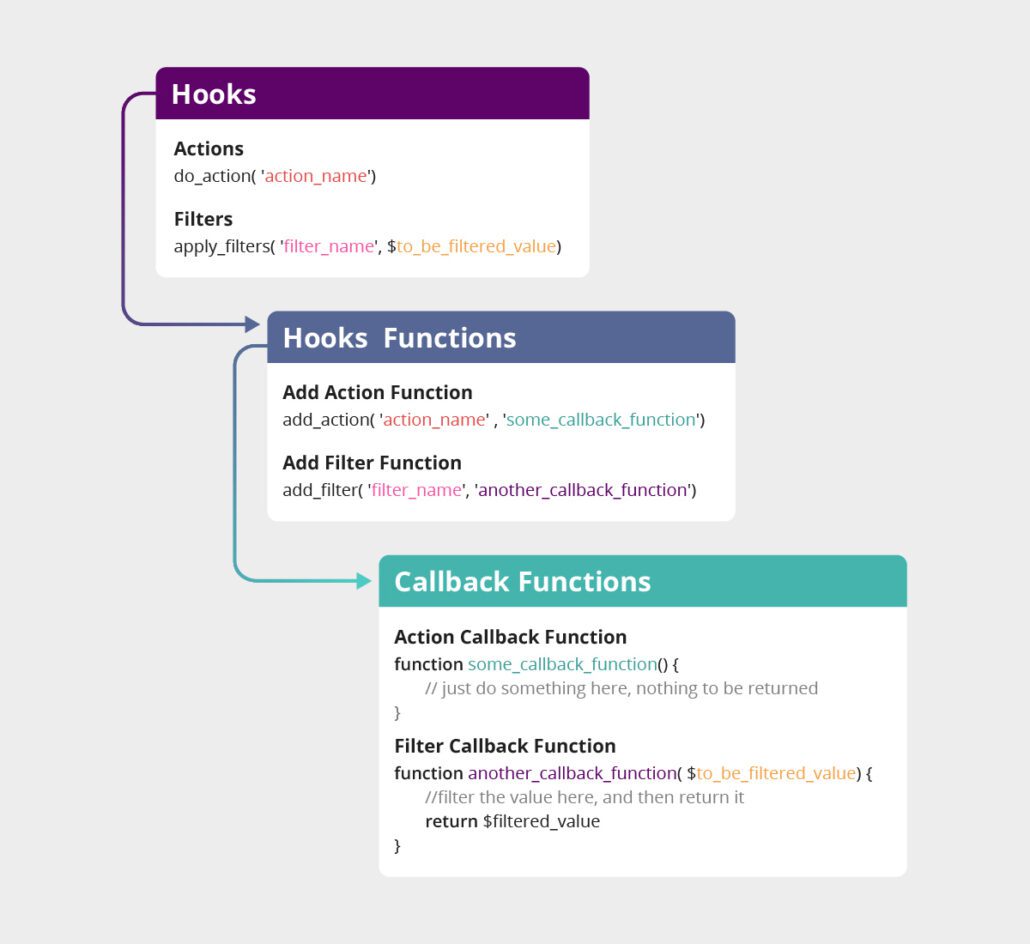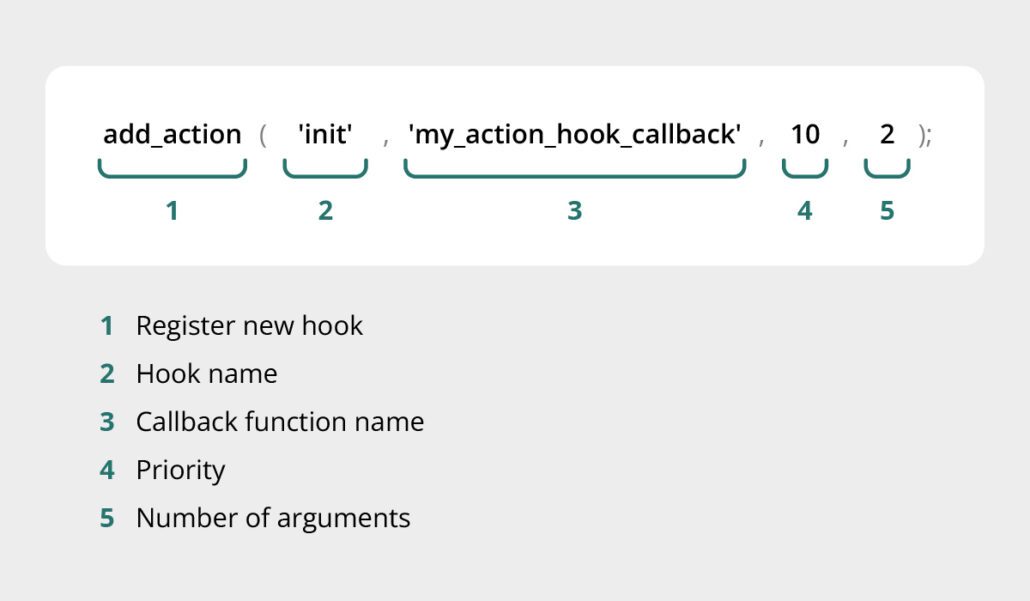
Welcome to “A Guide to WordPress Hooks, Actions, and Filters.” In the vast realm of WordPress development, understanding hooks, actions, and filters is essential for unlocking the full potential of this powerful platform.
Hooks serve as the backbone of WordPress customization, allowing you to seamlessly modify and extend its functionality. Actions enable you to perform specific tasks at key points during runtime, while filters empower you to manipulate data and return modified results. Whether you’re a beginner or an experienced developer, this comprehensive guide will provide you with invaluable insights and practical examples to harness the true flexibility and customization capabilities offered by WordPress hooks, actions, and filters. Let’s dive in and unlock the limitless possibilities of WordPress development.

Hooks
Hooks are the foundation of WordPress plugin and theme development. They are places where developers can ‘hook’ their custom code into WordPress at specific locations and change how WordPress operates without editing core files.

WordPress Hooks consist of two fundamental types known as Actions and Filters. Actions enable you to execute specific tasks at predefined points during the WordPress runtime, while Filters empower you to modify and return any data processed by WordPress.
Actions:
By employing an action, you can customize the default behavior of a particular function by extracting information from WordPress and performing operations on it. Once an action is executed, there is no necessity to pass any data back to WordPress.
To add actions, the add_action() function is utilized. WordPress offers several functions that facilitate the utilization of actions, with the following being the most commonly employed ones:

Actions are defined in the WordPress code as
do_action( 'action_name', [optional_arguments] );
By hooking into the do_action(‘wp_head’) action, you can execute custom code whenever WordPress processes the site header. This action does not require any additional arguments.
Complete example:
add_action( string $hook_name, callable $callback, int $priority = 10, int $accepted_args = 1 ): true
References of all actions:
https://codex.wordpress.org/Plugin_API/Action_Reference
https://developer.wordpress.org/reference/functions/add_action/
A filter will modify the default behavior of a specific function. It does this by manipulating the data it receives and returning it to WordPress before displaying it in the browser.
Examples:
Filters are defined in the WordPress code as
apply_filters( 'filter_name', 'value_to_be_filtered', [optional_arguments] );
The filter_name string is the name of the filter, the value_to_be_filtered variable is the value that needs to be filtered and returned, and the [optional_arguments] variable can pass additional arguments, just like with actions.
Example: The apply_filters( ‘admin_footer_text‘ , string $text ) filter can be hooked in to modify the text displayed in the admin footer. As of WordPress 5.4, its default value will show the sentence. Thank you for creating with WordPress. in the admin area footer.
|
WordPress Hooks |
|
| Actions | Filters |
| Actions are used to run custom functions at a specific point during the execution of WordPress Core. | Filters are used to modify or customize data used by other functions. |
| Actions are defined/created by the function do_action( ‘action_name’ ) in the WordPress code. | Filters are defined/created by the function apply_filters( ‘filter_name’, ‘value_to_be_filtered’ ) in the WordPress code. |
| Actions are also called Action hooks. | Filters are also called Filter hooks. |
| Actions can only be hooked in with Action functions. E.g. add_action(), remove_action(). | Filters can only be hooked in with Filter functions. E.g. add_filter(), remove_filter(). |
| Action functions need not pass any arguments to their callback functions. | Filter functions need to pass at least one argument to their callback functions. |
| Action functions can perform any kind of task, including changing the behavior of how WordPress works. | Filter functions only exist to modify the data passed to them by the filters. Action functions should return nothing. However, they can echo the output or interact with the database. |
| Action functions should return nothing. However, they can echo the output or interact with the database. | Filter functions must return their changes as output. Even if a filter function changes nothing, it must return the unmodified input. |
| Actions can execute almost anything as long as the code is valid. | Filters should work in an isolated manner so they don’t have any unintended side effects. |
In conclusion, mastering the art of WordPress hooks, actions, and filters opens up a world of endless possibilities for customizing and enhancing your WordPress website. By understanding how hooks work, leveraging the power of actions, and harnessing the flexibility of filters, you can shape your website’s functionality and appearance to suit your unique needs. With the knowledge gained from this guide, you are equipped to take full control of your WordPress development journey. So go ahead, experiment, and create remarkable experiences for your users. Embrace the versatility of WordPress hooks, actions, and filters, and unlock the true potential of your website. Happy coding!
Are you interested in the Future of WordPress? Check out this post!





